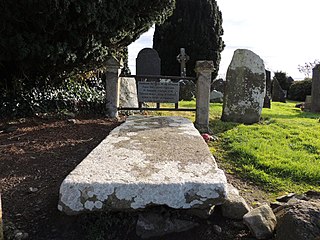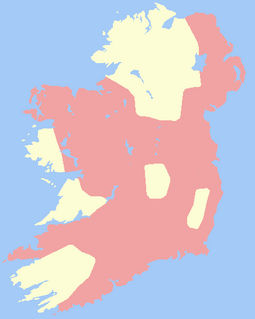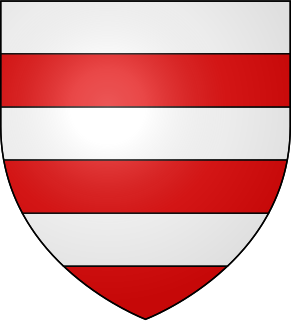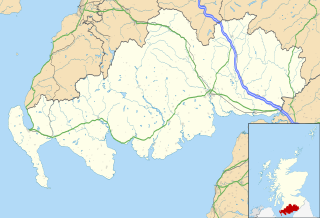
The Wars of Scottish Independence were a series of military campaigns fought between the Kingdom of Scotland and the Kingdom of England in the late 13th and early 14th centuries.

Edward Bruce, Earl of Carrick, was a younger brother of Robert the Bruce, King of Scotland. He supported his brother in the struggle for the Scottish crown, then pursued his own claims in Ireland. He was proclaimed High King of Ireland, but was eventually defeated and killed at the Battle of Faughart.

Earl of Carrick or Mormaer of Carrick is the title applied to the ruler of Carrick, subsequently part of the Peerage of Scotland. The position came to be strongly associated with the Scottish crown when Robert the Bruce, who had inherited it from his maternal kin, became King of the Scots in the early 14th century. Since the 15th century the title of Earl of Carrick has automatically been held by the heir apparent to the throne, meaning Prince Charles is the current Earl.

Baron Athenry is one of the oldest titles in the Peerage of Ireland, but the date of its creation is thoroughly uncertain; each of the first four Berminghams listed below is claimed by some writers to have been Lord Athenry, but the evidence is disputed. The title appears to have been given to the de Birmingham family of Birmingham, Warks, England as a reward for their help in the Norman invasion of Ireland in 1172. Both Sir William de Birmingham, and his son Robert de Birmingham, are variously claimed to have been involved in the invasion, but it is probable that, after the invasion, William returned to his home in England and left Robert their new lands in Ireland.

The First War of Scottish Independence was the initial chapter of engagements in a series of warring periods between English and Scottish forces lasting from the invasion by England in 1296 until the de jure restoration of Scottish independence with the Treaty of Edinburgh-Northampton in 1328. De facto independence was established in 1314 at the Battle of Bannockburn. England attempted to establish its authority over Scotland while the Scots fought to keep English rule and authority out of Scotland.
Sir Robert VI de Brus, 6th Lord of Annandale, jure uxoris Earl of Carrick (1271–1292), Lord of Hartness, Writtle and Hatfield Broad Oak, was a cross-border lord, and participant of the Second Barons' War, Ninth Crusade, Welsh Wars, and First War of Scottish Independence.
The Battle of Faughart was fought on 14 October 1318 between a Hiberno-Norman force led by John de Bermingham and Edmund Butler, Earl of Carrick, and a Scots-Irish army commanded by Prince Edward Bruce, Earl of Carrick, brother of King Robert I of Scots. It was a battle of the First War of Scottish Independence and more precisely the Irish Bruce Wars. The defeat and death of Bruce at the battle ended the attempt to revive the High Kingship of Ireland. It also ended, for the time being, King Robert's attempt to open up a second front against the English in the War of Scottish Independence.

The Bruce campaign was a three-year military campaign in Ireland by Edward Bruce, brother of the Scottish king Robert the Bruce. It lasted from his landing at Larne in 1315 to his defeat and death in 1318 at the Battle of Faughart in County Louth. It was part of the First War of Scottish Independence and the conflict between the Irish and the Anglo-Normans.

William II de Soules, Lord of Liddesdale and Butler of Scotland, was a Scottish Border noble during the Wars of Scottish Independence. William was the elder son of Nicholas II de Soules, Lord of Liddesdale and Butler of Scotland, and a cousin of Alexander Comyn, Earl of Buchan. He was the nephew of John de Soules, Guardian of Scotland.
Events from the year 1318 in Ireland.
Events from the 1310s in England.
Muireadhach III, Earl of Menteith was a Scottish nobleman.
John de Soules may relate to:
Thomas FitzJohn FitzGerald, 2nd Earl of Kildare, Lord Offaly was a noble in the Peerage of Ireland who held the office of Lord Justice of Ireland.
Sir Philip Mowbray or Philip de Mowbray was a Scottish gentleman who opposed Robert the Bruce in the Wars of Scottish Independence.
The Battle of Skerries, also named the Battle of Ardscull, was a battle in the Bruce campaign in Ireland – part of the First War of Scottish Independence – fought on 26 January 1316, resulting in a Scottish victory. It was part of the Irish campaign of Edward Bruce, brother of Robert Bruce, king of Scotland. The site of the battle was Skerries near Ardscull in County Kildare.
Joan FitzGerald, Countess of Carrick was an Irish noblewoman, and the wife of Edmund Butler, Earl of Carrick, Justiciar of Ireland. She was the mother of James Butler, 1st Earl of Ormond.
The Battle of Connor was fought on 10 September 1315, in the townland of Tannybrake just over a mile north of what is now the modern village of Connor, County Antrim. It was part of the Bruce campaign in Ireland.
The Battle of Moiry Pass was a military engagement between a Scots-Irish army commanded by Edward Bruce, brother of Robert Bruce, king of Scotland and a Hiberno-Norman force. It was a battle of the First War of Scottish Independence and more precisely the Irish Bruce Wars. Edward Bruce attacked a garrison of soldiers from the Lordship of Ireland, as part of his attempt to revive the High Kingship of Ireland. Bruce considered the battle a great success but was one of the very few victories that he gained.









